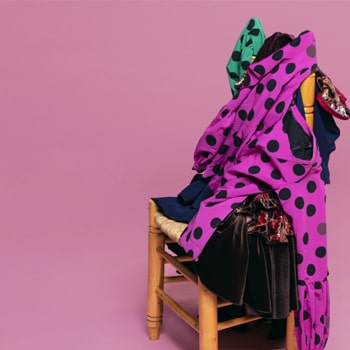A
A palo seco
It is a style of singing accompanied only by percussion (generally in the form of clapping).
Aire
The atmosphere of a flamenco performance.
Alboreá
It is a flamenco style normally sung at gypsy weddings, with the rhythm and guitar playing similar to soleá.
Alegría
It originated in Cádiz and has a rhythm similar to that of the soleares. It is a fast style of flamenco with a lively rhythm for dancing and energetic guitar playing. In keeping with its name, this flamenco style has a cheerful expression. However, when traditional forms are followed, the joy dance arrangement can be the most rigid, with various sections structured in different ways. Without dance, joy is a freer form.
B
Bailaora / Bailaor
Woman or man who dance flamenco.
Braceo
The movements of the dancer's arm.
Bulería
This flamenco form originated in Jerez in the styles of alegría and soleá. It is the fastest-paced flamenco style and probably the most difficult. It is accompanied by guitar and improvised dance. The fast pace of the bulería has proven to be very popular and is performed in many flamenco shows. It is usually the dance with which all flamenco revelry is finished off.
C
Cafés cantantes
They are the original forms of the flamenco tablao and were popular entertainment venues where live flamenco shows were offered. These premises had their greatest boom at the end of the 19th century and the beginning of the 20th century. In the mid-20th century, singing cafes experienced a brief resurgence.
Cajón
This percussion instrument traces its origins to Peru in the 19th century, but it did not enter the flamenco music scene until the early 1980s. Many remember it thanks to guitarist Paco de Lucía, who introduced the cajon in one of his songs, together with percussionist Rubén Dantas. The cajon is played with the performer sitting on top of it, hitting the front of the box with their hands and thus keeping the rhythm of the performance.
Cantaora / Cantaor
the flamenco singer.
Cante
there are different styles of cante (flamenco styles) that you can check out below, including: cante chico, cante grande or jondo, and cante intermedia.
Cante chico
It is one of the three main stylistic families of flamenco with a lighter and more optimistic feeling. The themes are often of love and happiness. Its forms include bulerías, alegrías and flamenco tango.
Cante grande / Cante jondo
Being one of the three main stylistic families of flamenco, cante grande or cante jondo is darker in its sentiment, with themes such as loss, anguish, despair and death. Forms include soleá, martinete, tonás, seguiriya, and jailera.
Cante intermedio
Being one of the three main stylistic families of flamenco, cante intermedia is one of the most flexible styles and encompasses all the forms that do not fall into cante chico or cante grande.
Cantes libres
A free form of flamenco music in which melody plays an important role, while rhythm and meter do not seem to apply. Most of these songs emerged from traditional and rhythmic flamenco music, evolving into pure melodies.
Cantiñas
This style of flamenco comes mainly from the province of Cádiz, while some of its forms also originated in Seville. With a fast rhythm similar to the soleá, this way of singing became popular with the rise of the singing cafes at the end of the 19th century until the beginning of the 20th century. Those singing cafés were the origins of the modern flamenco tablao.
Carcelera
Form of flamenco singing that originated in the prisons of Andalusia, where inmates used to sing about topics relevant to prison life.
Cartageneras
They have their origins in the fandango. The style developed from the typical songs of the miners around Cartagena, province of Murcia, where the fandango was already popular.
Castañetas / castañuelas
Percussion instrument made up of two concave pieces of wood, placed in one hand. Used in traditional Spanish dance, the instrument is also sometimes part of flamenco shows, although castanets should not be considered as belonging to flamenco.
Colombianas
Form of flamenco singing that has its roots in Colombian popular music.
Compás
It refers to the rhythmic pattern of a flamenco song. Compás, similar to percussion, is often produced by clapping, strumming, or the cajon.
Copla
It can be used to describe the verse of a song; it is also a style of music in Andalusia, called copla andaluza, which is not related to flamenco.
D
Duende
Guide or inner spirit that drives a flamenco artist. It is the spiritual connection between the artist and the song that, at its best, is conveyed to the audience.
